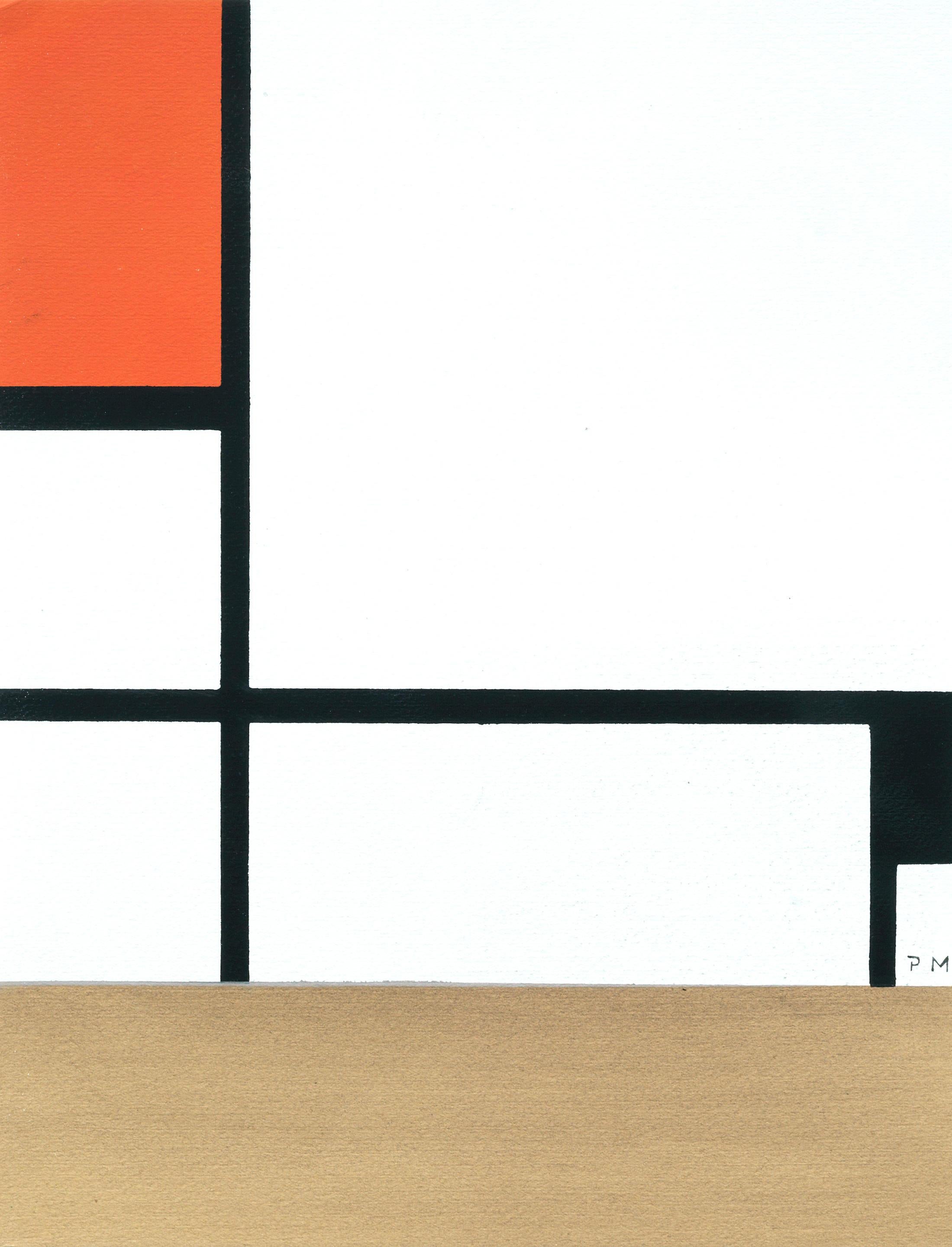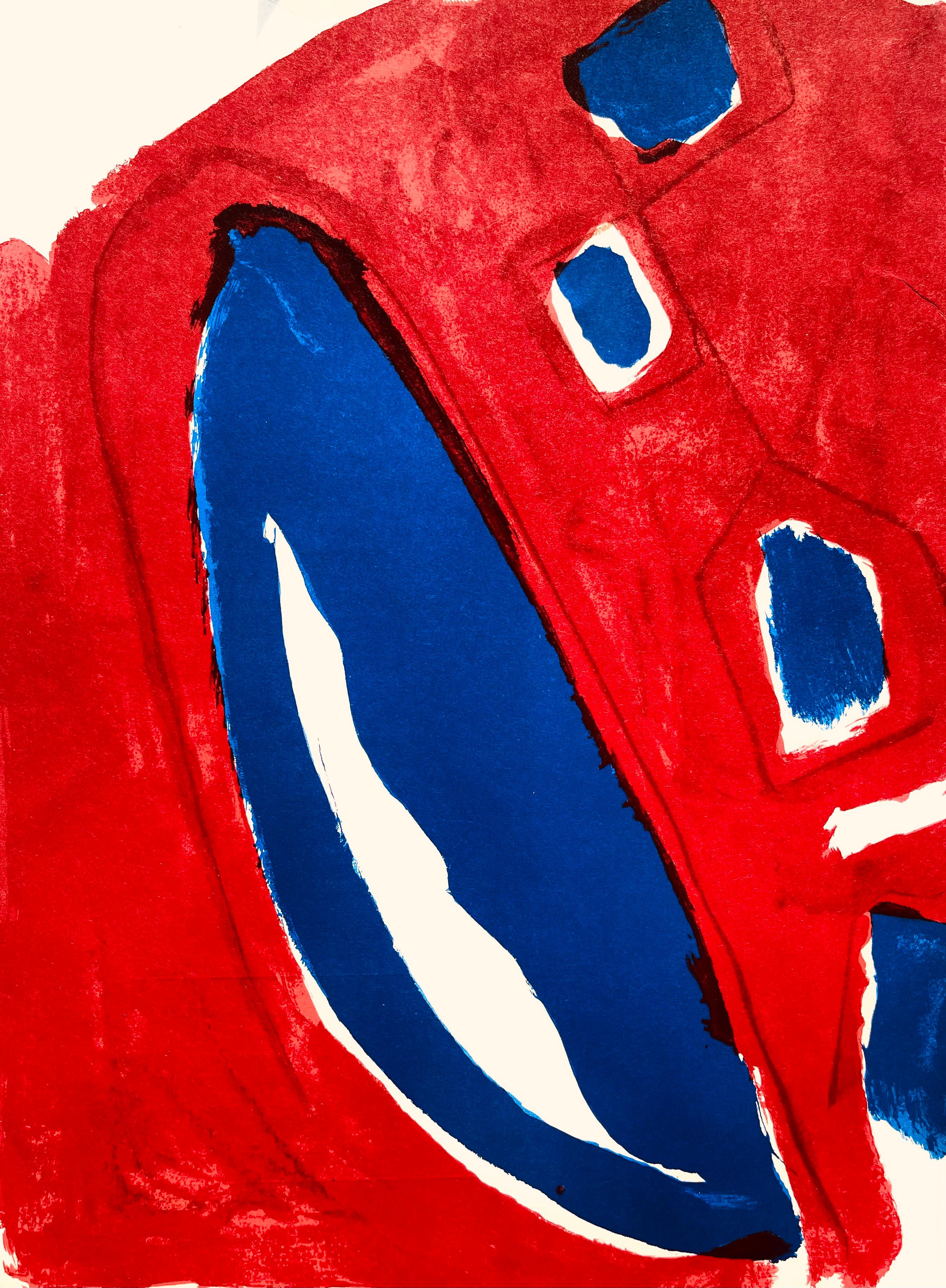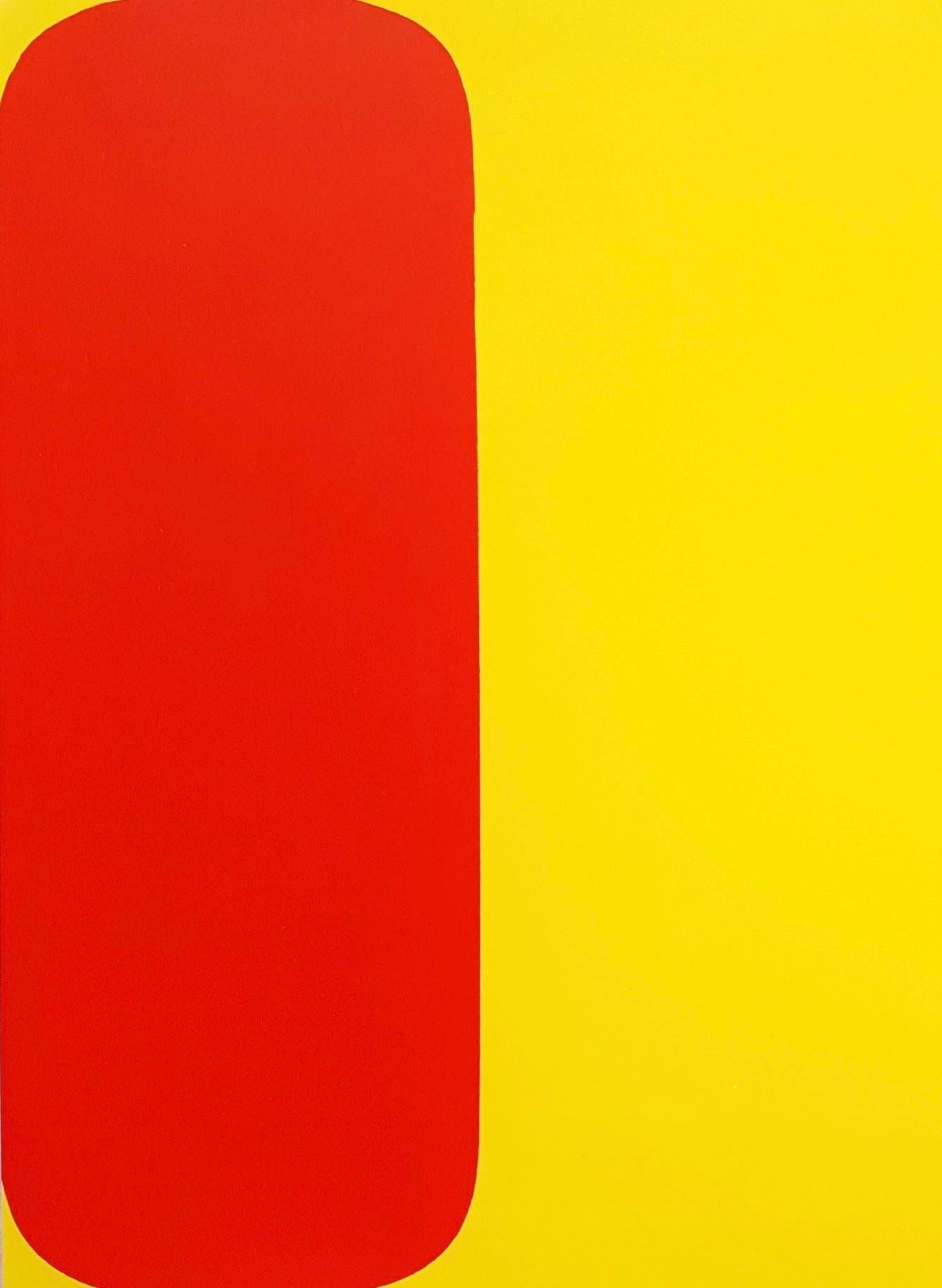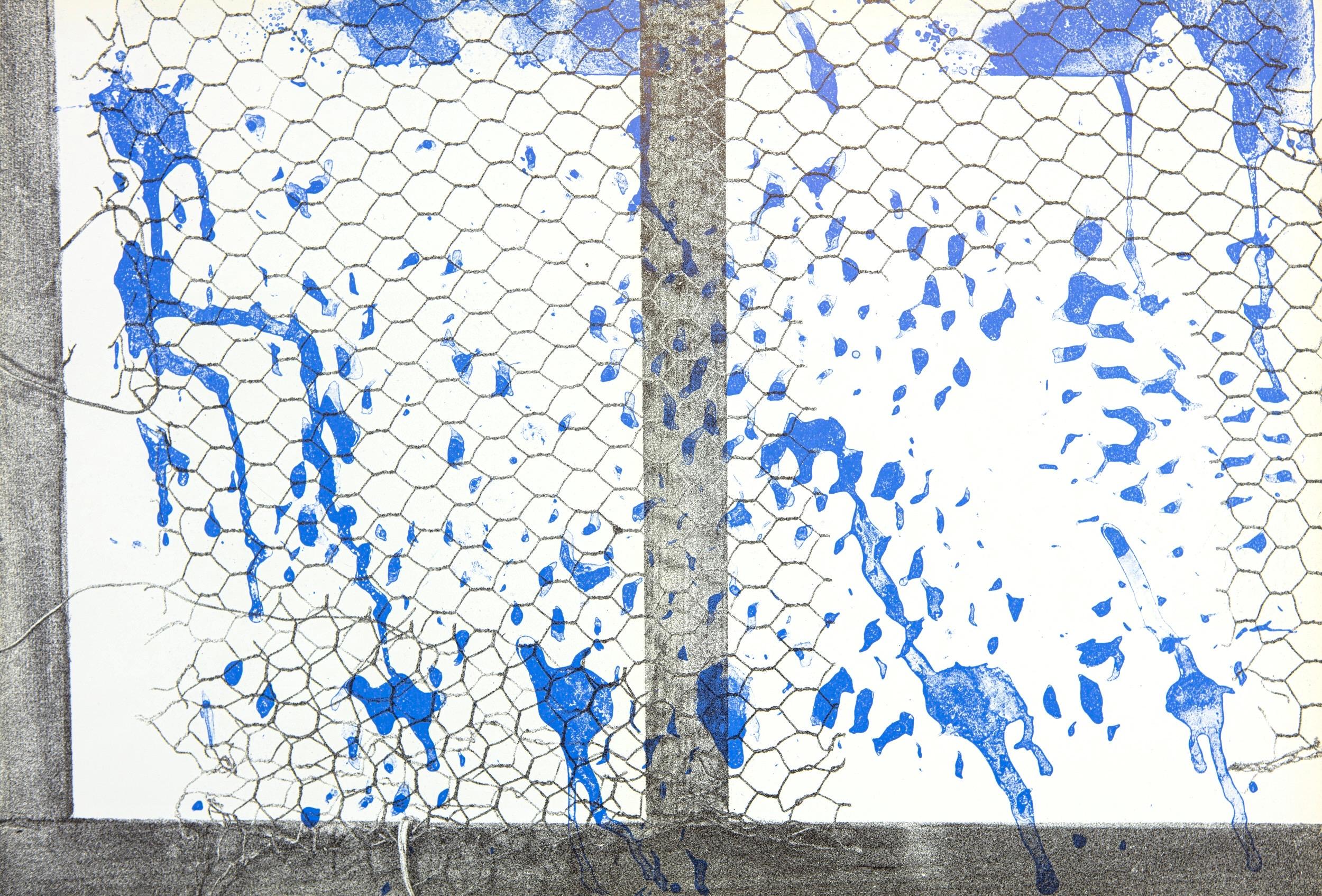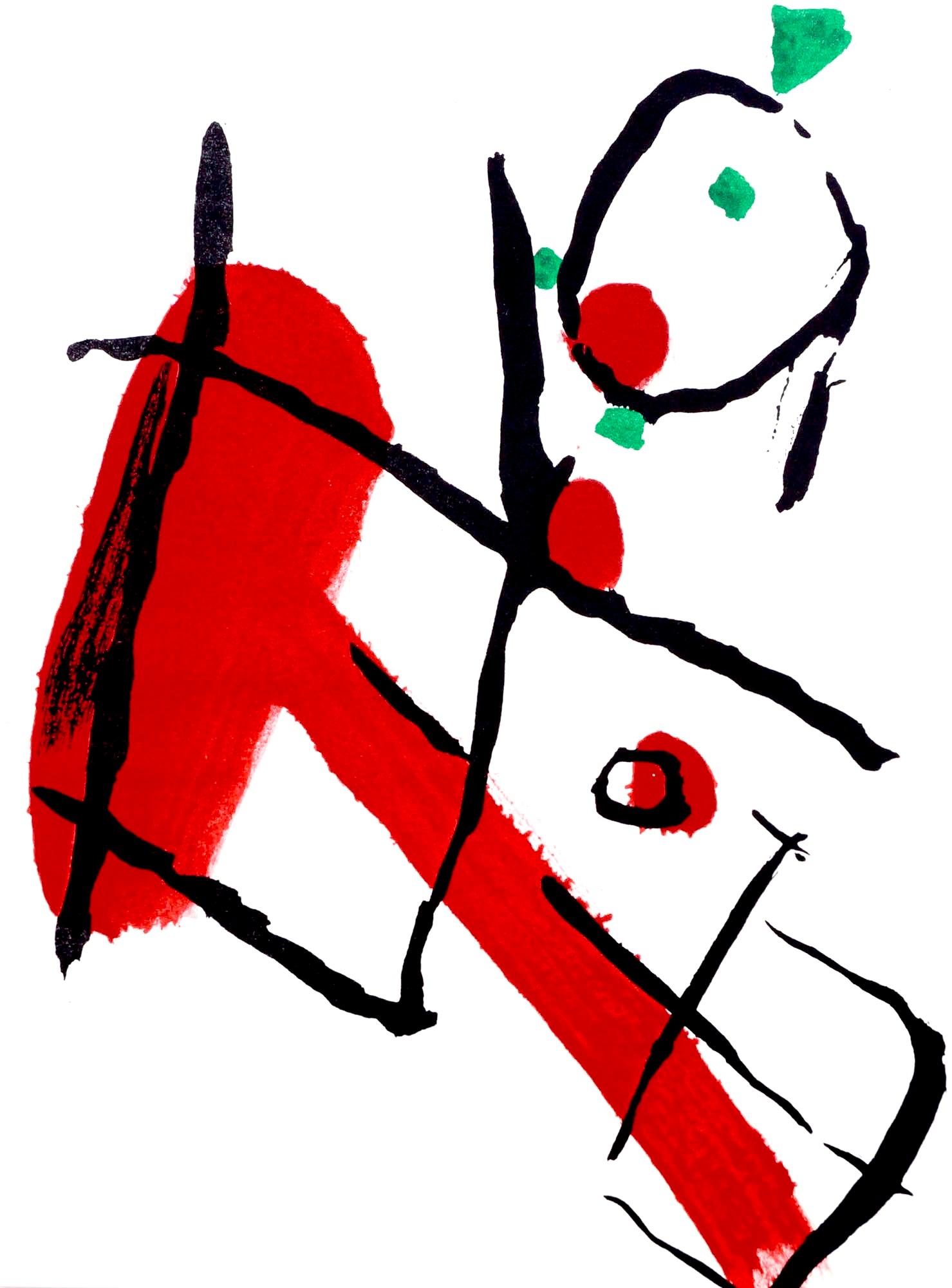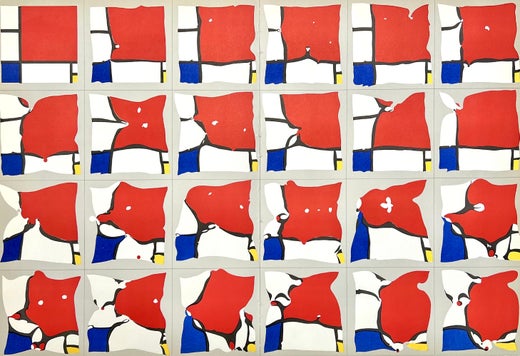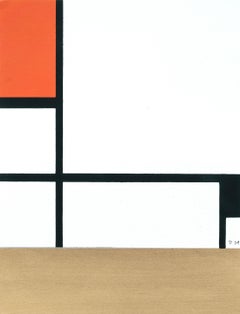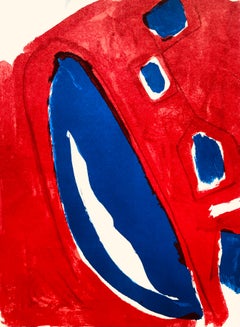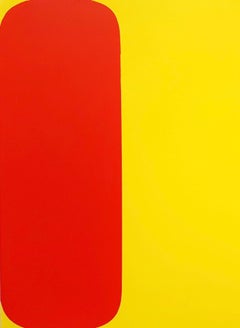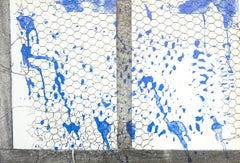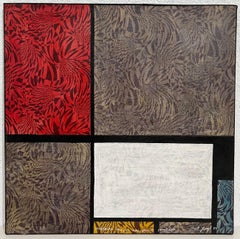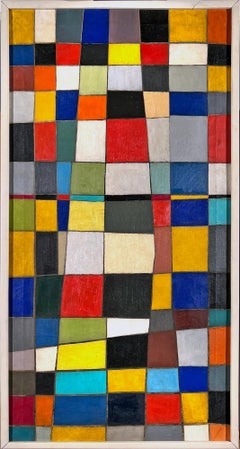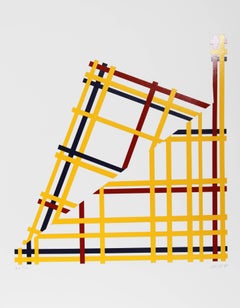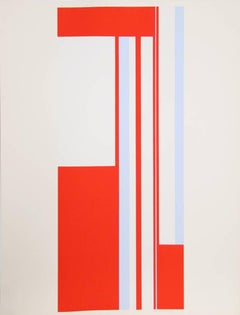Items Similar to Pol Bury, Tribute to Mondrian, from Derriere le Miroir, 1982
Want more images or videos?
Request additional images or videos from the seller
1 of 11
Pol BuryPol Bury, Tribute to Mondrian, from Derriere le Miroir, 19821982
1982
$716
$89520% Off
£547.44
£684.3020% Off
€626.64
€783.3020% Off
CA$1,009.65
CA$1,262.0620% Off
A$1,099.11
A$1,373.8920% Off
CHF 586.73
CHF 733.4220% Off
MX$13,268.82
MX$16,586.0220% Off
NOK 7,377.45
NOK 9,221.8120% Off
SEK 6,856.86
SEK 8,571.0720% Off
DKK 4,680.10
DKK 5,850.1220% Off
About the Item
This exquisite lithograph by Pol Bury (1922–2005), titled Hommage a Mondrian (Tribute to Mondrian), originates from the historic 1982 folio Derriere le Miroir, No. 250, Hommage a Aime et Marguerite Maeght (Tribute to Aime and Marguerite Maeght). Published by Maeght Editeur, Paris, under the direction of Aime Maeght, and printed by Imprimerie Moderne du Lion, Paris, this composition reflects Bury’s fascination with balance, motion, and geometric harmony. In Hommage a Mondrian (Tribute to Mondrian), Bury reinterprets the Dutch master’s grid with subtle fluidity and rhythm, transforming static order into a meditation on kinetic perception and spatial energy.
Executed on velin paper, this lithograph measures 15 x 22 inches (38.1 x 55.9 cm), with centerfold, as issued. As issued, it is unsigned and unnumbered, consistent with the authorized publication format. The edition captures Bury’s refined approach to motion and form, affirming his position as a major innovator in postwar European abstraction and kinetic art.
Artwork Details:
Artist: Pol Bury (1922–2005)
Title: Hommage a Mondrian (Tribute to Mondrian), from Derriere le Miroir, No. 250, Hommage a Aime et Marguerite Maeght (Tribute to Aime and Marguerite Maeght), 1982
Medium: Lithograph on velin paper
Dimensions: 15 x 22 inches (38.1 x 55.9 cm), with centerfold, as issued
Inscription: Unsigned and unnumbered, as issued
Date: 1982
Publisher: Maeght Editeur, Paris
Printer: Imprimerie Moderne du Lion, Paris
Condition: Well preserved, consistent with age and medium
Provenance: From the 1982 folio Derriere le Miroir, No. 250, published by Maeght Editeur, Paris
Notes:
Excerpted from the folio (translated from French), This special issue of Derriere le Miroir was designed and defined by Aime Maeght in the fall of 1980. He envisioned its publication as a celebration with which artists and writers published since 1946 were to be associated. He also chose Francois Chapon, president of the Reverdy Committee, to write the presentation. This Derriere le Miroir number 250 took the form, after its disappearance on September 5, 1981, of a tribute to Aime Maeght and his wife Marguerite Maeght who died four years earlier. 24 artists agreed to create an original graphic work for this issue which includes the general table of all issues as well as excerpts from texts by 32 writers. Finished printing on June 2, 1982 on the presses of the l'Imprimerie moderne du Lion in Paris. CL examples were printed on velin d'Arches, numbered from I to CL, and some non-commercial examples constituting the original edition.
About the Publication:
Derriere le Miroir (translated as "Behind the Mirror") was an iconic French art periodical published from 1946 to 1982 by Maeght Editeur, one of the most influential art publishers of the 20th century. Founded by Aime Maeght in Paris, the publication was conceived as a visual and literary collaboration between leading modern artists, poets, and critics. Each issue functioned as both an exhibition catalogue and a work of art in itself—featuring original lithographs printed directly from the artists' stones or plates, alongside essays, poems, and critical commentary. Over the course of 36 years, Derriere le Miroir produced more than 250 issues and showcased an extraordinary roster of artists including Henri Matisse, Marc Chagall, Joan Miro, Georges Braque, Alexander Calder, Fernand Leger, Pierre Bonnard, Alberto Giacometti, Eduardo Chillida, Ellsworth Kelly, Francis Bacon, Paul Rebeyrolle, Claude Garache, Antoni Tapies, Bram van Velde, Pierre Alechinsky, and Pol Bury. Printed in the ateliers of Mourlot and Arte, the periodical set new standards for quality in color lithography, combining fine art printing with elegant typography and poetic text. Beyond its visual brilliance, Derriere le Miroir also became a cultural chronicle of postwar European modernism. Each issue coincided with exhibitions held at Galerie Maeght, providing a collectible and widely accessible record of groundbreaking shows. Its integration of image, text, and philosophy created a dialogue between art and literature that elevated the modern art book to new aesthetic heights. Today, Derriere le Miroir remains one of the most sought-after and historically significant art publications, prized by collectors and scholars alike for its craftsmanship, influence, and its role in defining the visual language of 20th-century modernism. The Maeght Foundation in Saint-Paul-de-Vence continues to honor this legacy through exhibitions and archival preservation of the series, affirming Derriere le Miroir's enduring place in the history of modern art and fine art publishing.
About the Artist:
Pol Bury (1922–2005) was a Belgian painter, kinetic sculptor, and filmmaker whose pioneering use of movement, orbiting forms, and minimalist engineering positioned him as a key figure in postwar European art. Born in Haine-Saint-Pierre, Bury studied at the Academie des Beaux-Arts in Mons before engaging with Surrealist poets and the CoBrA group, later turning toward geometric abstraction and kinetic art inspired by the innovations of Pablo Picasso, Henri Matisse, Alexander Calder, Marc Chagall, Salvador Dali, Joan Miro, Georges Braque, Wassily Kandinsky, Marcel Duchamp, and Man Ray. Known for his slowly rotating columns, suspended spheres, and hydraulic fountains that explore balance, rhythm, and the poetry of motion, Bury’s work bridges surrealism, constructivism, and minimalism. His sculptures are held in major museum collections worldwide, including MoMA, the Guggenheim, and the Tate, and continue to captivate collectors for their elegance and mechanical grace. The highest price ever paid for a Pol Bury artwork at auction is approximately $288,143 USD, achieved in 2017 at Cornette de Saint Cyr, Brussels, for Fontaine.
Pol Bury lithograph, Bury Hommage a Mondrian, Bury Tribute to Mondrian, Bury Derriere le Miroir, Bury Maeght Editeur Paris, Bury Imprimerie Moderne du Lion, Bury 1982 edition, Bury kinetic art, Bury abstraction, Bury collectible lithograph, Bury Belgian modernist, Bury Maeght Paris publication.
- Creator:Pol Bury (1922 - 2005, Belgian)
- Creation Year:1982
- Dimensions:Height: 15 in (38.1 cm)Width: 22 in (55.88 cm)
- Medium:
- Movement & Style:
- Period:
- Condition:
- Gallery Location:Southampton, NY
- Reference Number:1stDibs: LU1465216701452
Pol Bury
Pol Bury (26 April 1922 – 28 September 2005) was a Belgian sculptor who began his artistic career as a painter in the Jeune Peintre Belge and COBRA groups. Among his most famous works is the fountain-sculpture L'Octagon, located in San Francisco.
About the Seller
4.9
Platinum Seller
Premium sellers with a 4.7+ rating and 24-hour response times
Established in 1978
1stDibs seller since 2021
1,237 sales on 1stDibs
Typical response time: <1 hour
- ShippingRetrieving quote...Shipping from: Southampton, NY
- Return Policy
More From This Seller
View AllPiet Mondrian, Sans titre, from XXe Siecle, 1957 (after)
By Piet Mondrian
Located in Southampton, NY
This exquisite lithograph and pochoir after Piet Mondrian (1872–1944), titled Sans titre (Untitled), from the album XXe Siecle, Nouvelle serie N°9 (double), Juin 1957, originates fro...
Category
1950s Abstract Geometric Abstract Prints
Materials
Lithograph
Tal-Coat, Composition, Derrière le miroir (after)
By Pierre Tal-Coat
Located in Southampton, NY
Lithograph on vélin paper. Inscription: Unsigned and unnumbered, as issued. Good condition. Notes: From Derrière le miroir, N° 131, 1962. Published by Aimé Maeght, Éditeur, Paris; pr...
Category
1960s Modern Abstract Prints
Materials
Lithograph
Ellsworth Kelly, Red, Yellow, from Derriere le Miroir, 1964
By Ellsworth Kelly
Located in Southampton, NY
This exquisite lithograph by Ellsworth Kelly (1923–2015), titled Rouge, Jaune (Red, Yellow), originates from the historic 1964 folio Derriere le Miroir, No. 149. Published by Maeght ...
Category
1960s Hard-Edge Abstract Prints
Materials
Lithograph
$1,036 Sale Price
20% Off
Free Shipping
Rebeyrolle, Composition, Derrière le miroir (after)
By Paul Rebeyrolle
Located in Southampton, NY
Lithograph on vélin paper. Inscription: Unsigned and unnumbered, as issued. Good condition, with centerfold, as issued. Notes: From Derrière le miroir, N° 202, 1973. Published by Aim...
Category
1970s Pop Art Landscape Prints
Materials
Lithograph
Tal-Coat, Composition, Derrière le miroir (after)
By Pierre Tal-Coat
Located in Southampton, NY
Lithograph on vélin Chiffon de Mandeure paper. Unsigned and unnumbered, as issued. Good condition. Notes: From the album, Lithographies et Eaux-Fortes Originales, Livres Illustres Or...
Category
1960s Modern Abstract Prints
Materials
Lithograph
Ellsworth Kelly, Red, Yellow, Blue, from Derriere le Miroir, 1964
By Ellsworth Kelly
Located in Southampton, NY
This exquisite lithograph by Ellsworth Kelly (1923–2015), titled Rouge, jaune, bleu (Red, Yellow, Blue), originates from the historic 1964 folio Derriere le Miroir, No. 149. Publishe...
Category
1960s Hard-Edge Abstract Prints
Materials
Lithograph
$1,356 Sale Price
20% Off
Free Shipping
You May Also Like
Feminist Surrealist French Abstract Apres Mondrian Oil Painting Myriam Bat Yosef
Located in Surfside, FL
Myriam Bat-Yosef
Surrealist abstract oil painting in colorful abstract patterned rectangles and shades
Hand signed and dated 1984.
Miniature design letter also signed.
Myriam Bat-Yosef, whose real name is Marion Hellerman, born on January 31, 1931 in Berlin, Germany to a Jewish family from Lithuania, she is an Israeli-Icelandic artist who paints on papers, paintings, fabrics, objects and human beings for performances. Myriam Bat-Yosef currently lives and works in Paris. In 1933, her family fleeing the Nazi Holocaust, Miriam Bat-Yosef emigrates to Palestine and settles in Jaffa. In 1936, she suffers a family tragedy, her father, militant Zionist, is called to fight, still recovering from an operation of appendicitis. The incision will become infected, antibiotics did not exist yet, and her father will die in the hospital after 9 months of suffering.
Myriam and her mother leave Palestine to live in Paris for three years. French is Myriam's first school language. In 1939, still fleeing Nazism, she returned to Palestine, leaving France by the last boat from Marseille. She moved to Tel Aviv with her mother, aunt and maternal grandmother.
In 1940, she began attending the Academy of Fine Arts in Tel Aviv and took her name as an artist, Bat-Yosef, which means Joseph's daughter in Hebrew, as a tribute to her father. In 1946, Myriam graduated as a kindergarten teacher but wanted to be an artist. Her mother enrolled her in an evening school to prepare a diploma of art teacher. At 19, she performs two years of military service in Israel.
In 1952, with a pension of $50 a month that her mother allocated, she went to study at the Beaux-Arts in Paris. To survive, she has several activities while studying. In 1955, she had her first solo exhibition, at the Israeli Club on Wagram Avenue in Paris. Many artists, such as Yaacov Agam, Yehuda Neiman Avigdor Arikha, Raffi Kaiser, Dani Karavan and sculptors Achiam and Shlomo Selinger attended the opening .
In 1956, she enrolled at the School of Fine Arts in Florence. This is where she meets the painter Errô. They share an icy studio in winter. Myriam moves to Milan with friends. She organizes a joint exhibition with Erro, one room each, at the Montenapoleone gallery. Her works are admired by the sculptor Marino Marini and the painters Renato Birolli and Enrico Prampolini. Myriam and Erro exhibit in Rome, Milan, Florence and meet many personalities: Alain Jouffroy and his wife, the painter Manina, Roberto Matta and his wife Malitte, textile artist who was one of the founders of the Pompidou Center. Back in Paris, Myriam and Erro get married, which allows Myriam to avoid being called into the Israeli army during the Suez Canal War.
In 1957, Myriam and her husband went to Iceland. Myriam works in a chocolate factory. Having enough money, she starts producing art again. She exhibited in Reykjavik's first art gallery. She meets the artist Sigridur Bjornsdottir, married to the Swiss painter Dieter Roth .
In 1958, Myriam and her husband leave for Israel. They exhibit in Germany, then in Israel. Back in Paris, the couple became friends with artists of the surrealist movement, such as Victor Brauner, Hans Bellmer, the sculptor Philippe Hiquily, Liliane Lijn, future wife of Takis and photographer Nathalie Waag. Erro and Myriam have a daughter on March 15, 1960, named Tura, after the painter Cosmè Tura, but also close to the Icelandic Thora or the Hebrew Torah. Bat-Yosef’s complex trajectory throughout the 20th century is linked as much to the transnational history of what was for a time called the School of Paris as it is to a certain legacy of Surrealism. Her work features the same idea of resolving antinomies that also defined the spirit of surrealism, and is enhanced with her readings of the Kabbalah and her spiritual grounding in Taoism. However, while there are reasons for her approach to be associated with the process of the ready-made, it is important to consider the immediate intrication of these works with her practice of performance, during which the body itself is also painted – a feminist response to Yves Klein’s Anthropometries (1960) and an echo of the happenings which Jean-Jacques Lebel organised at the time in Paris.
In 1963, Erró told Myriam that if she wants to be a painter, she can not be his wife. Myriam chose to be a painter and the couple divorced in 1964. Since that time, Myriam Bat-Yosef has exhibited in many countries: Europe, United States, Japan, etc.
Although long in the shadows, the work of Myriam Bat-Yosef has been greeted by many artists and personalities: Anaïs Nin, Nancy Huston, André Pieyre of Mandiargues, José Pierre, René de Solier , Jacques Lacarrière, Alain Bosquet, Pierre Restany, Sarane Alexandrian and Surrealist André Breton who, after a visit to her studio, confided to having been intrigued by its phantasmagorical dimension. She was included in the book Pop Art and Beyond: Gender, Race, and Class in the Global Sixties by Mona Hadler and Kalliopi Minioudaki. Extract "World Citizen, Artist of the Pop Era Sarah Wilson; Why do we know so little of Myriam Bat-Yosef, the most important female Israeli artist of the Pop era? Issues of identity and sexuality feature constantly in her work. She exhibited internationally from Reykjavik to Tokyo; she had two shows at Arturo Schwarz’s famous Dada/surrealist gallery in Milan; she participated in feminist art events in Los Angeles. Above all, in 1971, she conceived Total Art, a Pop Gesamtkunstwerk inside and outside the Israel Museum, Jerusalem. Painter, performer, and installation artist, she was also a lover, wife, and mother. Of Lithuanian-Jewish descent, she was close to the family of philosopher Emmanuel Levinas. An émigré in Paris she would repudiate a national passport, participating in Garry Davis’s short-lived “World Citizens” movement. She continues the lineage of women surrealist artists: Valentine Hugo, Leonor Fini, Dorothea Tanning, Leonora Carrington, Unica Zürn, Jane Graverol...
Category
1980s Surrealist Abstract Paintings
Materials
Oil
Squares - Color Field Painting - like Mondrian
By Robert Goodnough, 1917-2010
Located in Miami, FL
Squares is a bridge between Mondrian and the Hard-edge abstraction movement. Clearly, this is a very early work because the artist has not yet found his mature style. The flat squares of uneven proportion, are in a formal but off-axis vertical /horizontal grid structure. Perhaps it's the artists take on a "drunk Mondrian" where the squares stumble to align themselves. Each square shape is different in shape and color and with visible brushstrokes and light impasto. Look carefully at the gray squares. They all have a slightly different hue. The squares are all unique individuals and not a repetition To Goodnough this was his departure from his influencer.
Squares show the influence of his teachers including Hans Hofman...
Category
1950s Abstract Expressionist Abstract Paintings
Materials
Oil
Folded NYC I (Mondrian), Pop Art Screenprint by Jim Jacobs
By Jim Jacobs
Located in Long Island City, NY
Artist: Jim Jacobs
Title: Folded NYC I (after Mondrian)
Year: 1980
Medium: Serigraph, signed and numbered in pencil
Edition: AP 40
Size: 33 x 26 inches
Category
1980s Abstract Geometric Abstract Prints
Materials
Screen
Series 1, De Stijl Geometric Abstract Screenprint by Ilya Bolotowsky
By Ilya Bolotowsky
Located in Long Island City, NY
A silkscreen print by Ilya Bolotowsky circa 1970. A retro modern piece with an abstract geometric design.
Artist: Ilya Bolotowsky, Russian/American (1907 - 1981)
Title: Series 1
Ye...
Category
1970s De Stijl Abstract Prints
Materials
Screen
Piece de Resistance (Mondrian), Pop Art Screenprint by Jim Jacobs
By Jim Jacobs
Located in Long Island City, NY
Artist: Jim Jacobs, American (b. 1945)
Title: Piece de Resistance (Mondrian)
Year: c. 1980
Medium: Screenprint, signed and numbered in pencil
Editi...
Category
1980s De Stijl Abstract Prints
Materials
Screen
Resist. From The Rectangular Composition Series
Located in Miami Beach, FL
Almo wonders about his identity, the countries he has lived in, his daily routine and how he creates himself. An outsider who has made the world his home, skin, and citizenship, and ...
Category
2010s Contemporary Abstract Paintings
Materials
Paper, Acrylic
More Ways To Browse
Vintage Cor
Vintage Electric Motors
André Lanskoy On Sale
Andre Masson Don Giovanni
Anna Helper
Antoni Tapies Galerie Maeght
Arthur Boden On Sale
Benedictus Variations
Bridget Riley Poster
Calder Boomerang
Calder Convection
Calder Moon Lithograph
Calder Skybird
Calder Tree
Calder Triangles
Carmen Gracia
Cecily Brown All The Nightmares Came Today
Chihuly Float
